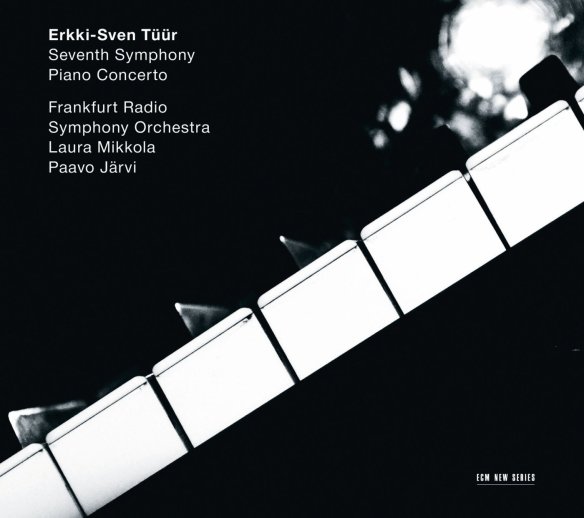Eleni Karaindrou
Concert in Athens
Eleni Karaindrou piano
Kim Kashkashian viola
Jan Garbarek tenor saxophone
Vangelis Christopoulos oboe
Camerata Orchestra Alexandros Myrat conductor
Concert production: The Athens Concert Hall
Recorded live November 19, 2010 at Megaron Hall (Hall of the Friends of Music), Athens
Recording engineer: Nikos Espialidis
Editing/assistants: Bobby Blazoudakis, Peter DePian, Alex Aretaios, and George Mathioudakis
Mixed and edited March 2012 by Manfred Eicher and Nikos Espialidis
Produced by Manfred Eicher
Eleni Karaindrou’s 10th album for ECM frames the self-taught Greek composer as the subject of worthy tribute in a second live conspectus for the label. Five years have passed since the recording of Elegy of the Uprooting, also captured at Megaron Hall in Athens, and the depth of her soundings has only intensified in that period. While that former performance made obvious her intimate working relationship with late filmmaker Theo Angelopoulos by way of a large projection screen at stage rear, here the music is its own actor. Differences between the two programs are striking, with emphasis now on Karaindrou’s incidental music for theatre. Directions also play out in the featured soloists: violist Kim Kashkashian and saxophonist Jan Garbarek. Kashkashian was instrumental—in the most literal sense—in exposing international listeners to Karaindrou’s sound on the highly successful Ulysses’ Gaze . Like that perennial soundtrack, Concert in Athens is a way station on her distinctive compositional path. Garbarek makes for an equally fine companion, his salted tone tessellating every motif it embraces.
Garbarek oversees the most brooding portions of the concert, which opens and closes with his flute-like tenoring in “Requiem for Willy Loman” and its variation. This piece, from Death of a Salesman, suspends its mournful souls like laundry without bodies to wrap. It’s a tender circle, within which further theatrical connections abound. Whether unlocking dramatic awakenings in “Invocation” (Who’s Afraid of Virginia Woolf) or matching the sway of windblown branch in “Tom’s Theme” (The Glass Menagerie), Garbarek holds these melodies to be self-evident. The same is true for the consummate “Adagio for Saxophone,” the inward spiral of which traces the album’s endearing highlight.
Kashkashian, for her part, sails closer to the coast, skirting the rim of darkness beyond the lighthouse’s purview. The strings reveal her singing patina in “Closed Roads” as if it were a jewel clasped in silver. With just a sweep of her bow, she evokes a tug of war between flesh and horizon that finds resolution only in the “Dance” from Ulysses’ Gaze. As an agent of memory, she emotes without mitigation, standing out even among the trio settings of “Laura’s Waltz” (with orchestral accompaniment) and “After Memory” (without). The latter’s braiding with Garbarek and oboist Vangelis Christopoulos is another of the performance’s focal points.
Karaindrou herself sits at the piano, laying the groundwork for much of the activity surrounding these themes. Her solo from Eternity and a Day comes second in the program, a hinge for every door thereafter. Other cinematic intersections include Landscape in the Mist and Dust of Time. In these, tension becomes an organic material, a bed of soil as ocean. On that note, there is a textuality to both this music and its sources that finds confirmation in four pieces inspired by M. Karagatsis’s novel Number Ten. Of these, “Waltz of Rain” unfolds most nostalgically, affirming yet again why Karaindrou’s oeuvre is as enduring as the relics of her homeland.
(To hear samples of Concert in Athens, click here.)


































